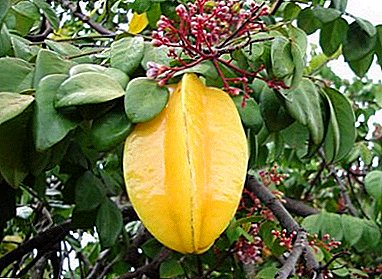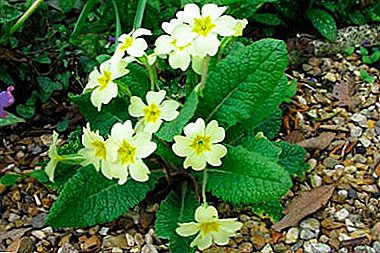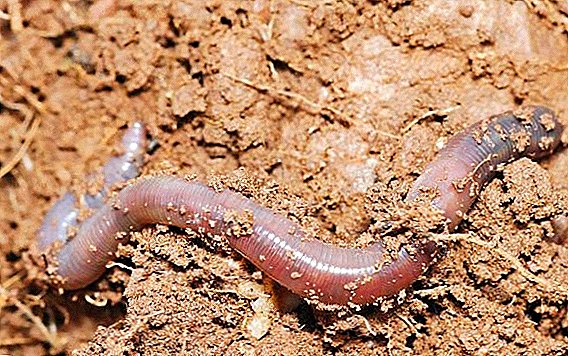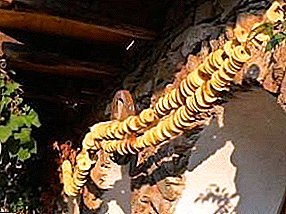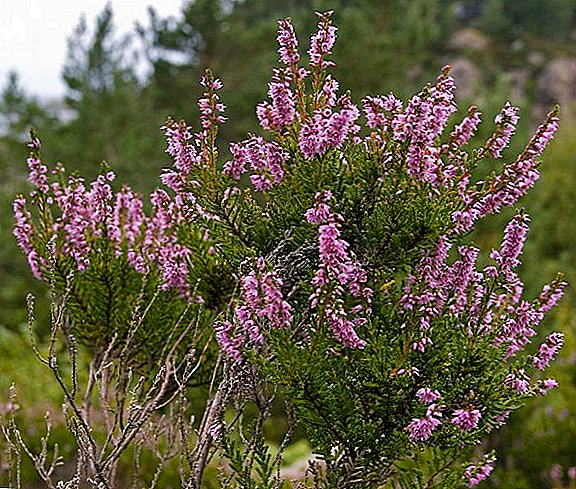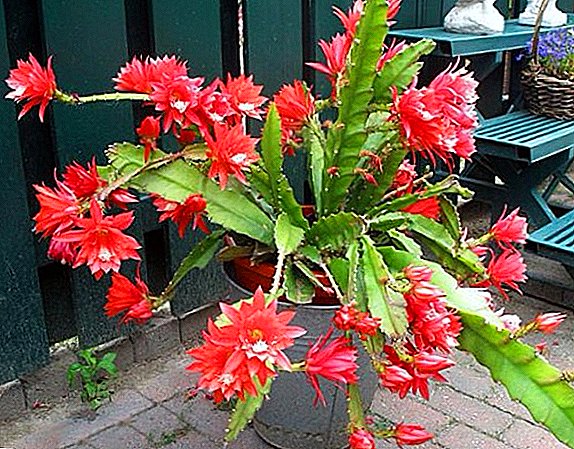 Epiphyllum cactus is an epiphytic plant with aerial roots. Stems of a flower of light green color flat or trihedral, with wavy or jagged edges. The plant reaches a height of about 60-70 cm, and therefore requires support. The bud has a funnel shape, its length can reach 40 cm. Cactus flowers have pink, white, red, yellow, purple color, their diameter varies between 10-12 cm. Epiphyllum, like any houseplant, requires supervision. Proper care of the cactus at home can pleasantly please any grower with long abundant flowering and pleasant aroma, and in the case of correct pollination, also with tasty fruits.
Epiphyllum cactus is an epiphytic plant with aerial roots. Stems of a flower of light green color flat or trihedral, with wavy or jagged edges. The plant reaches a height of about 60-70 cm, and therefore requires support. The bud has a funnel shape, its length can reach 40 cm. Cactus flowers have pink, white, red, yellow, purple color, their diameter varies between 10-12 cm. Epiphyllum, like any houseplant, requires supervision. Proper care of the cactus at home can pleasantly please any grower with long abundant flowering and pleasant aroma, and in the case of correct pollination, also with tasty fruits.
Did you know? Red prickly large fruits of epiphyllum are considered edible, they have a banana-strawberry flavor.
Choosing a place for epiphyllum
First of all, you need to decide which window sill in an apartment or house is best chosen for a flower. You must immediately decide for yourself where the cactus should be in the apartment. When choosing a place for epiphyllum, it is necessary to take into account which conditions of stay in the room will be the most comfortable for him.
Temperature
The first and main condition for the maintenance of any indoor flower is temperature. In spring and summer, during the period of active growing season, the indoor flower of epiphyllum will feel comfortable at temperatures not exceeding the range of 21-25 ºC. In the autumn-winter period, in order for the plant to rest, the temperature should be no more than 13-16 ºC, i.e., move it to the window sill. 
Lighting
As you know, phyllocactus do not like to hit them in direct sunlight. The light that hits the flower should be intense, but evenly distributed. It is best to create such lighting conditions suitable windowsills that go to the east or west. In the warm season, the flower should be carried out to the outside whenever possible.
Important! On the street, you need to place the cactus so that direct sunlight does not fall on its stems, in order to avoid burns.
Air humidity
Epiphyllum though a cactus plant, but very demanding on the humidity. Flower shoots need to be periodically wiped with a damp cloth. With prolonged elevated air temperatures during the summer period or with the presence of heating devices in the room, it is recommended to regulate the air humidity by spraying water with a spray bottle.
Choosing dishes for planting
 Important when planting and further vegetation of the flower epiphyllum, is the capacity in which it will grow. When choosing the shape, size and material of the pot, you need to take into account the size of the seedling and the tendency of the plant to grow vertically. Transplantation of epiphyllum of three- and four-year-old age is carried out after its flowering, only when roots appear from the lower openings of the pot. Young cactus stems are transplanted every year into the pot a few centimeters more than the previous one.
Important when planting and further vegetation of the flower epiphyllum, is the capacity in which it will grow. When choosing the shape, size and material of the pot, you need to take into account the size of the seedling and the tendency of the plant to grow vertically. Transplantation of epiphyllum of three- and four-year-old age is carried out after its flowering, only when roots appear from the lower openings of the pot. Young cactus stems are transplanted every year into the pot a few centimeters more than the previous one.
Did you know? For beautiful extraordinary flowers, epiphyllum is sometimes called orchid.
Pot size
Since the root system of a cactus is not very developed, its roots feel good in shallow pots, although planting in deep pots will not do any harm. To stimulate flowering of the epiphyllum, the pot should be tight for the roots. Choose a pot for succulent need 2-3 cm more than the previous one. If the roots of the cactus are strong, the pot should be deep.
Cookware form
 Although square or rectangular pots are often used for cacti, this is wrong. Saving space on the windowsill, the ability to put the pots tightly to each other impairs air circulation and disrupts humidity conditions. If you do not want to harm your houseplant, plant it in a round pot.
Although square or rectangular pots are often used for cacti, this is wrong. Saving space on the windowsill, the ability to put the pots tightly to each other impairs air circulation and disrupts humidity conditions. If you do not want to harm your houseplant, plant it in a round pot.
Important! Whatever form your pot, remember that its bottom should have holes for draining water. In the absence of runoff, the roots will rot.
Pot material
The choice of pot material is more aesthetic. Someone likes ceramics, someone prefers plastic. The advantages of pottery are good air exchange and drainage due to the porosity of the material, as well as the natural look. The advantage of a plastic pot is its ability to retain water. If the plant is young, not yet established, it is better to give preference to a plastic pot.
Substrate for plant epiphyllum
Substrate for growing epiphyllum can be prepared by yourself, or you can buy ready-made mix in a specialized store. If you want to prepare the soil for epiphyllum yourself, you will need to mix in the proportions 4: 4: 1: 1: 1 turf soil, leaf earth, charcoal, river sand, peat. The main requirements for the substrate are moisture and breathability, friability. Preference is given to slightly acidic soil.
Planting, reproduction and transplanting epiphyllum plants
 It is possible to bring such a wonderful plant as an epiphyllum at home by resorting to several methods: sow seeds, grow a cutting, or separate part of an old bush. The result of your fruit will be the same - a flower with lush stems and beautiful flowers. The process of growing cactus from seeds will be longer, and the minimum of effort and time is required for reproduction by dividing a bush.
It is possible to bring such a wonderful plant as an epiphyllum at home by resorting to several methods: sow seeds, grow a cutting, or separate part of an old bush. The result of your fruit will be the same - a flower with lush stems and beautiful flowers. The process of growing cactus from seeds will be longer, and the minimum of effort and time is required for reproduction by dividing a bush.
The division of the old bush
During transplantation of a rather large old bush, several stalks with roots can be separated to obtain a new sprout. It is best to plant a bush after flowering. Stems should be juicy and strong, rotted roots cut and disinfect with activated charcoal. The separated root is placed in a prepared pot with drainage and a special substrate for cacti. The first time after transplanting the newly formed flowers obscure, irrigation is rarely carried out.
Using stem cuttings
 If you want to get a healthy plant guaranteed, you can resort to stem cutting. The cutting is carried out in April-May. For cuttings, a cut is made from healthy stems, cuttings 10–15 centimeters long at the bottom are sharpened like pegs. To leave the plant juice, cuttings for one or two days, leave in an empty pot, placed cut down. Then place the cuttings in the finished dry substrate to a depth of 1.5 cm, top it with a layer of sand 2 cm thick. The height of the pot should not exceed 7 centimeters. The stalk is placed in a shaded place, watering begins from the next day.
If you want to get a healthy plant guaranteed, you can resort to stem cutting. The cutting is carried out in April-May. For cuttings, a cut is made from healthy stems, cuttings 10–15 centimeters long at the bottom are sharpened like pegs. To leave the plant juice, cuttings for one or two days, leave in an empty pot, placed cut down. Then place the cuttings in the finished dry substrate to a depth of 1.5 cm, top it with a layer of sand 2 cm thick. The height of the pot should not exceed 7 centimeters. The stalk is placed in a shaded place, watering begins from the next day.
Seed method
Seed planting method is quite simple. Seeds are sown in pots, irrigated with a spray bottle and covered with polyethylene or a can. The substrate should be heated to a temperature of 25 ºC. The greenhouse is ventilated daily for an hour. When sprouts appear, the film is removed. Initially, the plants look like ordinary spiky cacti, with time the spines fall off and the branches become flat and smooth. Epiphyllum grows from seeds no earlier than 5 years later.
Plant Care
 Plant care is to comply with the rules of watering, making useful substances, spraying and pruning. After all, these factors affect not only the vital activity of a flower, but also its flowering. Adhering to the simple rules for the care of the flower, you can avoid unpleasant consequences in the form of diseases and wilt cactus.
Plant care is to comply with the rules of watering, making useful substances, spraying and pruning. After all, these factors affect not only the vital activity of a flower, but also its flowering. Adhering to the simple rules for the care of the flower, you can avoid unpleasant consequences in the form of diseases and wilt cactus.
Did you know? Epiphyllum is widely used in medicine. With the help of tinctures made on the basis of cactus, psoriasis, neurological diseases and stomach diseases are treated.
Epiphyllum watering
Succulent is poured regularly, the water should be separated, preferably soft, the water temperature should be at room temperature. During the active growing season, irrigation should be generous, but the top layer of soil in the pot should have time to shake. Toward the end of summer, irrigation is reduced, and in winter, minimized. At the same time, remember that the earth should not dry out absolutely. With the arrival of spring, the amount of watering increases.
Epiphyllum spraying
 Since the cactus is home to tropical and subtropical latitudes, unlike its counterparts, the plant likes moisture to live in the air. In the hot season, the stems are more succulent, spraying is carried out with a spray or shower. Water should be at room temperature. Spray need to generously, closing the soil from erosion. Spraying is better in the morning or evening to avoid direct sunlight. In the winter spraying is not carried out.
Since the cactus is home to tropical and subtropical latitudes, unlike its counterparts, the plant likes moisture to live in the air. In the hot season, the stems are more succulent, spraying is carried out with a spray or shower. Water should be at room temperature. Spray need to generously, closing the soil from erosion. Spraying is better in the morning or evening to avoid direct sunlight. In the winter spraying is not carried out.
Trimming Epiphyllum
Plants such as epiphyllum, form not only by tying or propping, but also trimming. Pruning cactus is the timely removal of poorly developed, damaged, faceted, round in section, elongated stems at the base of the flower, as well as shortening the flat branches.
With the active growth of the plant, it is necessary to cut out the curves directed inside the stems. Old cacti pruned stems without buds and those covered with cork. When pruning flat stalks, it is necessary to take into account that buds are formed on last year’s branches. The branches that bloomed last year do not form buds again, but they can be removed after 2-3 years, because they provide life support.
Fertilizer and feeding epiphyllum
 In order not to complicate your life, to excel in feedings, buy in the store the usual fertilizer for cacti. In feeding, the plant needs a phase of active growth (spring-summer). Fertilizers are applied according to the instructions for use 1 time per two weeks. During budding the cactus is poured with a mullein diluted with water in a ratio of 1: 4. In winter, feeding is stopped. Even as a nutrient using a variety of nitrogen fertilizers for indoor plants.
In order not to complicate your life, to excel in feedings, buy in the store the usual fertilizer for cacti. In feeding, the plant needs a phase of active growth (spring-summer). Fertilizers are applied according to the instructions for use 1 time per two weeks. During budding the cactus is poured with a mullein diluted with water in a ratio of 1: 4. In winter, feeding is stopped. Even as a nutrient using a variety of nitrogen fertilizers for indoor plants.
Problems in growing epiphyllum
Problems with growing epiphyllum can occur only with improper care of the flower. Complications and undermining of the immunity of the cactus occur in violation of certain environmental conditions:
- if the stalks frown or dry - this is an excess of moisture in the soil or contact with the plant in direct sunlight;
- the cactus stopped growing, the buds crumble, and the stems change color — the place where you put the pot does not fit;
- branches of phyllocactus are drying and dying off - you have damaged the roots by replanting a flower;
- stems begin to crack from excessive amounts of nutrients introduced;
- root rot can provoke not only fusarium, but also an excess of moisture in the pot, irrigation with cold water, overheating of the flowerpot in the sun.
Important! When the buds began to form, the flower can not be moved from its place and twisted, and then the cactus will throw them unbroken.
 If you are puzzled, how to get epiphyllum to bloom, just let it rest. Place the flower for the winter in a room with poor lighting and an air temperature no higher than 12 ºC. The flower will rest a bit and with the right care in the spring-summer period it will delight you with a violent bloom. If the epiphyllum still does not bloom, remember to make timely pruning of the shoots.
If you are puzzled, how to get epiphyllum to bloom, just let it rest. Place the flower for the winter in a room with poor lighting and an air temperature no higher than 12 ºC. The flower will rest a bit and with the right care in the spring-summer period it will delight you with a violent bloom. If the epiphyllum still does not bloom, remember to make timely pruning of the shoots.
Pests and diseases of epiphyllum
The most common epiphyllum annoying aphid, scythe, spider mite and mealybug.
Spider mite If you see that the epiphyllum has become covered with cobwebs, this is the first symptom of the spider mite. The size of the tick varies from 0.3 to 0.5 mm, females - purple-red, males - bright red. Dry warm premises serve as a favorable environment for its habitat. It is a danger all year round. Cactus leaves infected with spider mites turn yellow and dry. Pests are located on the back of the sheet.
 The pincers are insidious in that, when unfavorable conditions for their reproduction occur, the female can dig into the ground and fall into a state of rest before the onset of conditions suitable for vital processes. One female tick lays 150 eggs at a time. As soon as you notice that the succulent is in the web, immediately begin to act, because over the summer one female can lay 8-10 generations of eggs. If the flower is not strongly affected, you can wash its shoots with a solution of soapy water, water tincture of garlic. In case of intensive damage, use insecticides or colloidal sulfur.
The pincers are insidious in that, when unfavorable conditions for their reproduction occur, the female can dig into the ground and fall into a state of rest before the onset of conditions suitable for vital processes. One female tick lays 150 eggs at a time. As soon as you notice that the succulent is in the web, immediately begin to act, because over the summer one female can lay 8-10 generations of eggs. If the flower is not strongly affected, you can wash its shoots with a solution of soapy water, water tincture of garlic. In case of intensive damage, use insecticides or colloidal sulfur.
Shchitovki. The symptom of infection of the flower with the shield is the appearance of yellow dots on the trunk, which eventually increase in size. Then the stems turn yellow and curl. The resettlement of shinovok occurs by air flow. Attached to the stalk, they look like scales or growths. The consequence of infection is a growth arrest, and as a result the flower disappears.
To destroy this type of pest we need:
- brush or soft sponge,
- solution of soapy water, garlic water tincture or insecticide solution.
 Aphid. Especially great harm to flowers does aphid. Insect sizes reach 2 mm, females do not have wings, males have. Color - light green, yellow, red, pink. Settling in large colonies on the young shoots from below, they suck the juice from the flowers, causing them to deform, they carry viral diseases. Insect-infected plant fragments lose color, and the flower becomes covered with a sticky substance.
Aphid. Especially great harm to flowers does aphid. Insect sizes reach 2 mm, females do not have wings, males have. Color - light green, yellow, red, pink. Settling in large colonies on the young shoots from below, they suck the juice from the flowers, causing them to deform, they carry viral diseases. Insect-infected plant fragments lose color, and the flower becomes covered with a sticky substance.
To get rid of aphids, you need to remove it from infected flower fragments, treat it with a solution of soapy water with kerosene, or spray it with a systemic insecticide. If the flower is strongly amazed, it is better to cut off the shoots. If necessary, repeat the treatment after 7-10 days.
Mealybug. The body of an adult individual reaches 3-4 mm, oval, pink or orange color, covered with a white patina (bags with eggs). Mealybugs gather in colonies on the underside of branches or on tops of young shoots, drinking juice from a flower. Lay the offspring in clumps of white cobwebs, and the flower, struck by them, becomes like artificial snow from cotton wool. The buckworm is very depleting plants: the growth of shoots is inhibited. A black fungus can appear on the mucus produced by the worms. Worm eggs are removed from the flower with a cotton swab or a damp sponge. Then the infected place is washed with a sponge dipped in soapy water or alcohol diluted with water or vodka. If the flower is very affected by the insects, it is better to resort to etching with systemic insecticides.
Among the diseases most common are fusarium, anthracnose, rust and black rot.
 Fusarium When infected with this disease, the branches of the cactus become red, the cause of the change in the color of the stem is the rotting of the roots of the flower. Treat the plant by replacing the substrate in a pot, cutting off rotten roots and treating them with wood ash. The cause of fusarium is stagnant moisture in the pot with abundant watering.
Fusarium When infected with this disease, the branches of the cactus become red, the cause of the change in the color of the stem is the rotting of the roots of the flower. Treat the plant by replacing the substrate in a pot, cutting off rotten roots and treating them with wood ash. The cause of fusarium is stagnant moisture in the pot with abundant watering.
Rust. Rusty spots are formed on the stems. Cause a disease abundant irrigation at low ambient temperatures, direct sunlight or moisture on the branches during irrigation. The flower is cut using Topaz treatment.
Black rot Manifestation of the disease in the form of black shiny spots on the stems. Infected stems are cut, the cut is disinfected with crushed activated charcoal, and the flower is sprayed with Fundazole.
Anthracnose. Brown spots appear on succulent stems. Infected stems should be removed or trimmed immediately. The cut is disinfected with activated carbon. The plant is sprayed with a solution of any fungicide.




